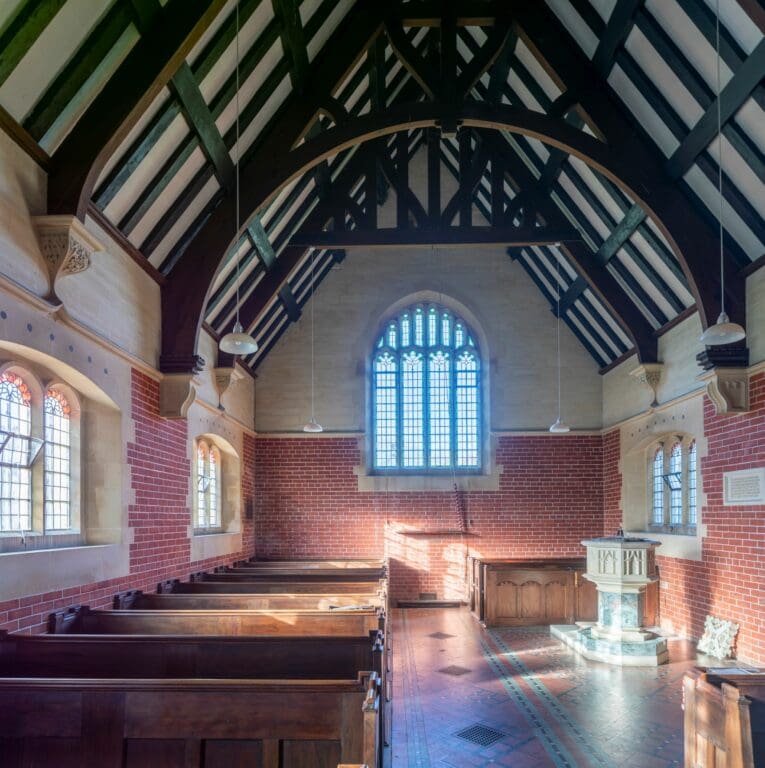
Open daily
OS grid reference
ST825448
what3words
mediate.suspends.protectedPlease note: the church is accessed by a short flight of steep steps.
The light inside is glorious, celestial even.
In her will of 1899, Mary Barton, formerly of Corsley House, left £10,000 for the purchase of a piece of land at Whitbourne Temple and the building of a proprietary chapel in the memory of her husband and son.
Mrs Barton’s Will specified that a Trust – The Barton Trust – be established to look after the building, and a specific condition was included that no form of service is to be used save with express permission of the Trustees. The Trust exists “to keep the church in repair and make provision for such services as they consider it right to demand of the Rector of Corsley”.
The chapel is an Arts and Crafts Gothic set-piece designed by W. H. Stanley of Trowbridge – his only known building – and built by Buyers Brothers of Westbury. It is constructed from local Butts Quarry stone, with the plinth and quoins cut from Atworth stone and Bath stone used for decorative features. Raking buttresses with elegant cappings support the building on all four sides.
The chapel is approached from the northeast under a lych-gate built by David Carruthers (Trustee of The Barton Trust). A charming spirelet with an octagonal bell-turret, cross-windows as bell-openings and griffin gargoyles crowns the east gable. One enters the church via the north-porch, under a sinuous, depressed arch with foliage-carved spandrels and over a flagstone floor.
The nave is lit by two rows of three-light windows with depressed arched heads and cusped lights with decorative fleur-de-lys leadwork. The west gable has a three-light Perpendicular-style window with timber gabled bell-cote on brackets. This bell-cote and its bell were given to the church in 1910 by Mr and Mrs Cookson of Sturford Mead.
The nave walls are made of red brick with bright white pointing to the level of the string-course running over the window heads; the walls are ashlar above this. The chancel is entirely ashlar stonework, denoting the greater importance of the east end.
The roof structure is exposed throughout: the nave roof is formed of four-bays with arched collar trusses on carved stone corbels. The chancel roof is carried on three scissor-braced trusses.




The buttons below link to church or local information on other websites.